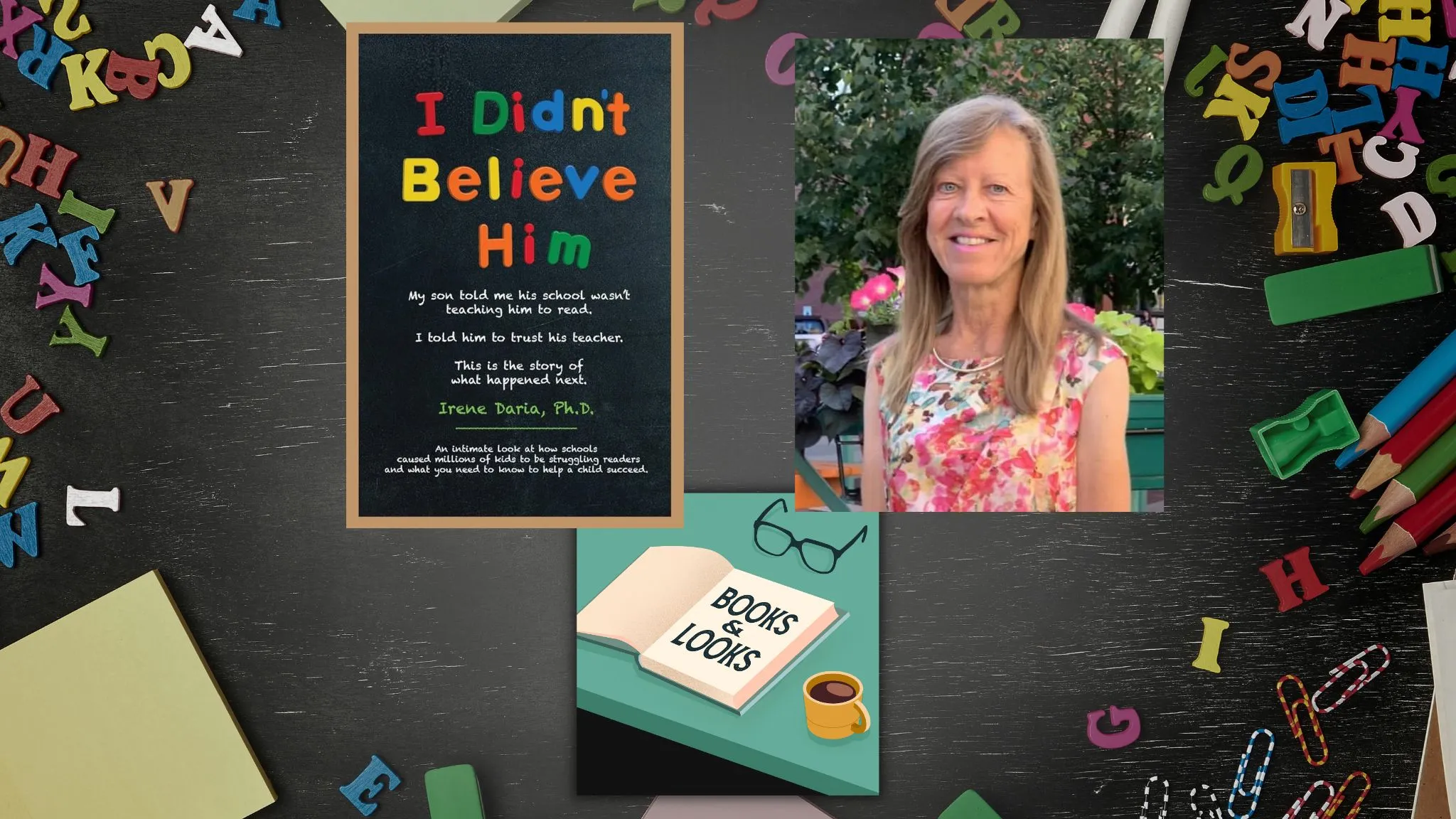In the summer of 2022, a year after the Taliban captured Kabul, I visited a young Afghan couple who had resettled in Texas. They lived in a one-bedroom apartment in a crumbling complex that housed other recently arrived Afghan families. As we chatted, a knock sounded at the door. It was a man looking for translators to help with his church’s work.
An uncomfortable silence descended after he left. I was paying this visit to interview the couple about the kidnapping of their three-year-old daughter by a US Marine, an evangelical Christian. The couple had adopted the girl in Afghanistan after her parents—relatives of theirs—were killed in a joint Afghan-US night raid in 2019. She was an infant at the time and was badly injured; the Americans transferred her to the hospital at Bagram Airfield, which is where the marine first met her. For months after, he plotted to adopt her through a court in Virginia. Even as Afghan authorities sought to reunite her with her relatives, he convinced the judge in Virginia that she had no remaining family. When the couple became her guardians, the marine befriended them from the US via an intermediary. Once they and the girl came to the US and settled onto a military base that housed Afghan arrivals, he brandished the adoption papers he had secured. Then he took her.
When I went to see the couple, the marine’s adoption papers remained valid, and he still had custody of the child. It was not lost upon the couple that their daughter, whom they had been raising Muslim, was likely now attending church and praying to Jesus. I later learned that the marine and his wife were invited to speak in front of a congregation of three hundred in Fredericksburg, Ohio, to share the story of their good deed in adopting this child. They seemed to believe that they had rescued her from a hellacious life in Afghanistan and from an afterlife in hell.
The marine was successful in large part thanks to his family’s professional and religious networks (his brother was an attorney at the evangelical legal nonprofit Liberty Counsel), which included sympathetic officials in the Donald Trump White House, the military, and government agencies who helped him overcome bureaucratic hurdles, as well as church leaders and, crucially, an Afghan translator. The translator helped the marine speak with the Afghan couple over months and gain their trust. When the marine implored the couple to come to the US with the child for better medical care, the translator vouched for him. Only after they lost their daughter and took legal action did the Afghan couple learn that the translator was not Muslim, as they had assumed, but Christian. By then, though, he had stopped responding to their messages.
After the September 11 attacks, evangelical leaders in the United States were unrestrained in their condemnations of Islam. “I think Muhammad was a terrorist,” the televangelist Jerry Falwell said. “Adolf Hitler was bad, but what the Muslims want to do to the Jews is worse,” the televangelist Pat Robertson declared. Rick Wood, the managing editor of a small publication produced by the mission Frontier Ventures, articulated what he perceived to be an urgent duty:
The civilized world has declared war on terrorism. Now it is up to Christians to tear down the strongholds of Satan that have held the Muslim peoples in bondage for hundreds of years. It’s time for us to set these captives free.
Falwell had presented evangelical Christians’ spiritual mission as a “holy war” against those who did not believe in Jesus. The years following September 11 proved opportune for recruiting soldiers. Churches ramped up training programs, and a few schools offered master’s degrees in converting Muslims. One woman who attended an intensive training program at Columbia International University in South Carolina, and who planned to work in Turkey, told a reporter at Mother Jones at the time that she believed Islam was “a false religion, and I’d like to see it be gone.” Her husband, also in attendance, added, “If they don’t have a chance to experience Jesus, they’re going to hell.”
At a 2003 conference hosted by the Arab International Ministry, evangelical Christians from around the US gathered for seminars on Islam and converting Muslims. The Quran, one speaker declared, directs Muslims to slay infidels, while “in the Bible there are no words from Jesus saying we should kill innocent people.” The experts laid out some dos and don’ts for spreading the Gospel: Do carry copies of the New Testament to give to Muslims; do invite them for a meal at home; do offer them chocolate chip cookies. Avoid approaching them in groups; don’t bring them to church, in case they mistake the singing for a party. They would save Muslims not by showing force, the teachers explained, but by demonstrating the love of Christ through example, through charity and hospitality—by offering food, education, and community.
The number of missionaries to Muslim countries had already quadrupled over the previous decade, from several hundred in 1990 to about three thousand in 2002, according to evangelical leaders. The growth reflected two historical trends. One was the remarkable ongoing expansion of Christianity worldwide: there were more Christians in the Global South than in the North for the first time in a millennium. By 2020 half of the world’s 2.4 billion Christians resided in Latin America and sub-Saharan Africa. Such growth informed the second trend: while the US still sends more missionaries abroad than any other nation, the rest of the world is catching up. In 1970 about 31,000, or 12 percent, of foreign missionaries were dispatched from the Global South; by 2021 that number was 200,000—47 percent of the world’s total.
In her book Soul by Soul: The Evangelical Mission to Spread the Gospel to Muslims, the journalist Adriana Carranca traces the rise of evangelical Christianity in parts of the developing world, and the growth of missionaries from these regions that followed. Though an overwhelming majority of Latin America was already Christian by the early twentieth century—a result of Spanish and Portuguese colonization—they were largely Catholic. Revivalist American evangelicals believed that true Christians had to be “born again,” so they considered the region to be a legitimate, and susceptible, mission field.
Pentecostalism, a small charismatic sect, quickly expanded in the US by helping foster, as Carranca puts it, “a sense of spiritual equality and unity” among congregants of diverse class, racial, and ethnic backgrounds. It did the same in Latin America. The Pentecostal missionaries also “legitimated existing indigenous spiritual practices, promises of healing, and testimonies of a life-transforming faith,” Carranca explains, propelling its rise. Today it is the fastest-growing religious sect in the world.
Of course, newly converted Protestants in the Global South did not always agree with the ideologies and priorities of their brethren in the North. To many Christian leaders in Latin America, US evangelism smelled of imperialism: it was devoid of principles of social and political justice, and it “reduced religion into a marketed product and viewed converts merely as numbers.” The division came to a head at the 1974 International Congress on World Evangelization in Lausanne, Switzerland, sponsored by the Billy Graham Evangelistic Association, with attendees representing 150 countries and 135 Protestant denominations. As Carranca explains, one Peruvian speaker warned the audience “that many of the countries that had succumbed to violent Marxist revolutions were those where Christianity had allowed itself to be identified with the ruling class.” American evangelical missions were criticized for being driven primarily by numbers, underscoring what Christianity Today described as the division between the “data-oriented church growth school and the discipleship-demanding compassion and justice group.” By the end of the conference, a lukewarm consensus had been achieved, and—as tends to happen at conventions—meaningless phrasing was added to the final documents of the Lausanne Covenant. The two camps agreed to affirm that “evangelism and socio-political involvement are both part of our Christian duty.”
At the second international conference, in 1989, Luis Bush, a missionary born in Argentina and trained in the US, offered a more affecting proposal. Christianity had been frustratingly unable to penetrate the rectangular area across the Middle East and parts of North Africa and Asia, which he called the 10/40 Window, for the tenth and fortieth parallels. Revolutions, civil wars, and brutal foreign interventions had rocked the region, and faith in Jesus was alive among only small pockets of the population. There, Bush sought to combine the drive toward growth with efforts to promote social justice. As Carranca writes,
US conservative evangelicals and their disciples in Latin America believe they are fighting spiritual battles, and they see poverty, wars, and disasters as caused by evil forces to which the only solution is Evangelism.
The 10/40 Window was the new frontier. The number of missionaries began to climb.
After September 11, American Christians appealed to their Latin American counterparts to staff the front lines of mission fields in parts of the Muslim world, such as Afghanistan and Iraq, where the wars had begun, and Turkey, where many refugees were fleeing. One reason was security: white Americans were perceived as hostile. (After all, it was their government dropping bombs on some of these countries.) Another reason was efficacy. Some Americans worried that they would not be effective in “places with high anti-Western convictions,” especially compared with missionaries from the Global South who, they suggested, shared “the culture and skin color.”
One Brazilian missionary summarized the division of labor more directly: Americans “are better in planting churches, discipleship, and establishing local leaders,” but Brazilians “win hearts and minds.”
Carranca, a Brazilian journalist who has reported on the war in Afghanistan, first heard about a Brazilian missionary couple living in Kabul during a reporting trip in 2008. The couple’s Christian proselytizing was illegal in Afghanistan, so they lived in secrecy. It was only after two years that the husband, S.P. Luiz, and his wife, Gis, agreed to talk to Carranca, who in turn agreed to offer anonymity. (Luiz and Gis are pseudonyms.) Carranca states plainly that she is a secular journalist. When the couple asked her if she believed, she answered, “I believe that you believe.”
And what they believed was this: that they were called upon by God to uproot their lives, move halfway around the world, and live in a conflict zone in order to convert Muslims. The directive, as they explained it to Carranca, came in the form of dreams, images, and otherworldly messages. One night Luiz was walking along a Brazilian beach when suddenly he heard a voice: “I will take you across the seas.” Luiz recalled that a map of the world opened in the sky “like an LED TV, and the 10/40 Window appeared.” Then, a country: Afghanistan.
Luiz didn’t seem to question the message; instead, he heeded it and moved halfway across the world. In Afghanistan, when a man remarked to Luiz that it hadn’t rained in his village in a long time, and later that day it started to rain, Luiz called it “Jesuscidence.” Another time, stuck in Kabul traffic with a dead car, a case full of Bibles, and a police checkpoint ahead, Luiz implored out loud, “In the Name of Jesus, move!”—and the car did.
Over time, Carranca met more missionaries, as well as new converts. She traced their routes to Pakistan, Jordan, Syria, Turkey, and Egypt. Even if some of these countries did not criminalize conversion from Islam, it was considered apostasy. Often missionaries worked under great risk: government and social scrutiny, threats from the Taliban, raids, televised exposés. The work was tedious, but the missionaries operated with quiet determination and the long game in mind. In the grand scheme of things, these places represented the spiritual battlefields of a holy war.
And yet, however clear God’s directive, souls still reside in bodies—and it is the physical world that moves them. After the September 11 attacks, President George W. Bush pledged to “rid the world of evil.” He considered this to be an American duty. “God’s signs are not always the ones we look for,” he said. “We learn in tragedy that his purposes are not always our own.” Bush’s chief speechwriter and senior policy adviser was a conservative evangelical Christian named Michael Gerson. (As Frances FitzGerald noted in her vital book The Evangelicals, the Bush administration employed more conservative Christians in the federal bureaucracy than any other Republican administration. “For the first time prayer groups were discovered deep in the federal bureaucracy,” FitzGerald wrote, “and members of Christian right organizations could be found among neoconservatives, flat tax economists, and lawyers who belonged to the Federalist Society.”) In the first six months of Operation Enduring Freedom—the opening salvo of Bush’s “war on terror” and initially named Infinite Justice—the US dropped about 1,228 cluster bombs over Afghanistan. Evangelical missionaries followed military tanks into Afghanistan and Iraq with newly granted freedom, resources, and mandate.
Soul by Soul opens with a story about an Iraqi man named Zeyad Zaid who worked as a driver with the US military after the 2003 invasion of Iraq. In 2007 he was injured when a roadside bomb exploded under his truck. Afterward he could no longer walk. Zaid was angry with Iraq’s long, brutal history of violence, with this new war, with God. He also admired his American comrade, a soldier named John, who spoke to him about Jesus Christ and who, to Zaid, seemed to be at peace. Months into his stalled recovery, Zaid decided to pray to the “American God.” One day a mysterious caller, who said he worked with a private contractor offering medical support, encouraged Zaid to travel to Baghdad for treatment. There Zaid underwent surgery and physical therapy and was eventually able to walk again. All this was a sign to him. He drifted away from Islam and toward Christianity.
It didn’t seem to occur to Zaid, as Carranca notes, that he was injured in the first place because of the US invasion of his country and that white evangelical Christians were some of the staunchest supporters of the war. Zaid also doesn’t seem to realize, as the author doesn’t note, that the health care system in Iraq was ravaged by US sanctions in the 1990s and that good medical treatment was now available because of the funds the US invested into hospitals after the invasion. The “American God” came to Zaid with an American arsenal and American capital.
Other Muslims were converted in less dramatic circumstances: at an informal school set up by Christians for poor families in Afghanistan, at a refugee camp in Pakistan, by a football coach in Egypt who proselytized to his team. Carranca’s reporting offers important and useful insight into how missionaries operated in Muslim-majority countries, including ones where such work was forbidden by local law. To continue their mission in Kabul, Luiz and Gis, the Brazilian couple, opened a small pizza business, hired a few converted Afghans, and used it as a front to surreptitiously spread the word of Christ.
It was difficult to know if conversions were genuine. One missionary wondered to Carranca how much the Afghan kids understood when she had them pray to Jesus at Christmas. A Christian Iraqi dentist told Carranca that he saw “scores” of Muslims convert to Christianity when he worked for Samaritan’s Purse, an evangelical Christian aid organization started by Franklin Graham. “Some conversions are not real,” he said. “When aid leaves, they are back in mosques.” As the balance of power in the country shifted and militant groups strengthened, he observed that the Muslims who really converted did so not because of aid but because of the rise of the Islamic State of Iraq and Syria (ISIS), a group that used Islam to justify brutalizing both Christians and Muslims.
Still, aid was an important tool, and missionaries like Luiz and Gis were boosted in their work by charity, contracts with international organizations, and indirect funding from USAID. Indeed, as bombs moved from Kabul to the hinterlands of Afghanistan, money poured into the capital from abroad. According to a Boston Globe investigation, US federal funds to faith-based organizations (FBOs) doubled during Bush’s first term: twenty cents of every USAID dollar went to such groups. And “out of 159 prime contracts with FBOs, only two Muslim groups received any grants, with 98 percent of the funds going to Christian groups, even though most of the work was done in majority-Muslim countries.” It should be noted that during this time Muslim charities in the US weren’t just denied funding, they also faced government scrutiny. Almost immediately after September 11, the government froze assets of the biggest Muslim charity in the country and slapped its founders with trumped-up terrorism-related charges. It also shut down five other US-based Muslim charities, claiming they had terrorist ties.
Reading Soul by Soul sometimes feels like stepping through the looking glass. The post–September 11 era was one of widespread conspiracy theories about creeping sharia law in the US—furtive plans by Muslims to take over American culture. We heard it insinuated everywhere that Muslims were barbaric, that they did not care about their children and sent them to madrassas to become mullahs or to training camps to become suicide bombers. Talking heads repeated justifications for why Muslim fanaticism needed to be stopped with bombs abroad and prisons at home.
Meanwhile the US invasion of Afghanistan directly resulted in the deaths of more than 70,000 Afghan and Pakistani civilians. The Christian missionaries that Carranca interviewed had uprooted their children’s lives as well as their own. Two mothers in Afghanistan shared the guilt they felt for bringing their children on their mission, to a conflict zone; after all, the children had not chosen this life. “But neither had they or their husbands,” Carranca writes. “They believed the two families were just attending God’s call. To them, that was the right thing to do.”
When, in a horrific incident, a missionary and his two children were killed in Kabul, their wife and mother had inscribed on their graves, “They Tried to Bury Us. They Didn’t Know We Were Seeds.” One must believe that the absurd, premature death of one’s family carries meaning: in this case, the woman saw them as martyrs.
This adage about seeds, taken from a couplet by the Greek poet Dinos Christianopoulos, has been invoked in various conflicts to similarly comprehend loss, including by the Zapatistas in the 1990s and Palestinians today. Still, some wars are perceived as more legitimate than others.
Donald Trump’s political rise created awkward conditions for evangelical Christians in the US. Trump insulted Latino immigrants—many from the same countries where missionaries were recruited—and deplored Muslims, many from countries to which missionaries were deployed. As Carranca writes, “God’s Kingdom, conceived by evangelicals as universal and borderless, sharply contrasted with Trump’s isolationist foreign policy.”
The spread of evangelical Christianity met certain limits: broadly speaking, Americans are moving toward nonreligious affiliation, and the fastest-growing religion in the world today is Islam. But as Trump rose to prominence, a rush of refugees from the Middle East and Afghanistan (after displacement through the wars against ISIS and the Taliban) expanded possibilities of bringing new arrivals into the fold.
About 80 percent of white evangelical Protestants voted for Trump, but several prominent leaders broke from his policies, including the 2017 “Muslim ban.” Over a hundred evangelical leaders signed an open letter that year calling for the reversal of Trump’s immigration restrictions, and hundreds more signed on after it was released. One told The Washington Post at the time, “Speaking up for and caring for refugees is more an act of worship and obedience to a God whose Kingdom is global.” Another told Christianity Today, “We are closing the doors to the very people that we say we want to share the gospel with.” And one more described it as a possible missed opportunity; as Carranca explains, it had become increasingly difficult to ignore that evangelicals needed immigrants as a “matter of survival.”
Carranca’s access to the missionaries and her deep, yearslong reporting are impressive. But there is something discomfiting throughout her book: a refusal among many evangelicals to recognize that the spiritual mission they embarked upon—even with Latin American missionaries at the helm—was possible because of the military, financial, and political power they wielded. It is a power that, even as it claims to want to save every soul, also decides what bodies are worth saving.
When Kabul fell, Glenn Beck famously raised money to bring a plane full of Afghan Christians to the US so they could escape what might befall them under Taliban rule. In an interview with Christianity Today about the US withdrawal, one Afghan pastor in the US said he believed that the reason for poverty and conflict in his home country was not decades of war and foreign intervention but that Afghans “did not try Jesus Christ. They did not try God. They did not try His love and His mercy.”
In each of the countries visited by missionaries—nation-states shaped by their own political and economic circumstances, by particular conflicts over land and resources—any situation could be explained as a sign of the divine. If Afghans suffered under bombs, it was because of their refusal to accept Jesus Christ. When Egyptians rose up to overthrow a dictator in 2011, that was God “working to dethrone rulers and destroy old structures,” as Luiz put it. When Arabs and Afghans tried to reach the shores of Europe and the US, that was a sign that “God is moving all these people” and that the Muslim world was undergoing a spiritual awakening.
Such an interpretation of the world, in which everything is directly determined by a higher power, suggests that we have little agency to enact change. It also releases us from responsibility. If it is God who decides the fate of countries torn apart by war and poverty, it becomes easier to not interrogate one’s own part in those events. After the Taliban seized power in 2021; after the US withdrew its soldiers, bombs, and experts; and after the missionaries retreated, the US and several European states also shut off the spigot of foreign aid money to Afghanistan. The result was disastrous. In 2020 poverty affected 19 million Afghans; two years later it was 34 million.
From one perspective, the US Marine who took the baby girl from her Afghan relatives rescued her from this new Afghanistan and offered her a life of relative security and prosperity. But that does not negate the reality that he used manipulation and force to take the child from her Afghan family—who recently, after nearly three distressing years, were able to successfully challenge the marine’s adoption order in court. (They are still fighting to regain custody.)
The work of missionaries is not nefarious or deliberately harmful, of course. Like Carranca, I believe that they believe. Perhaps everything is done in the service of God and the greater good—exposing children to deadly risk so their parents can offer salvation to Muslims; bombing Afghanistan and Iraq to free people from tyranny and rid the world of evil; separating a baby from her Afghan family to provide her wealth in the US. But even if all of this were true, are we willing to face the consequences of our good intentions?



















 English (US) ·
English (US) ·